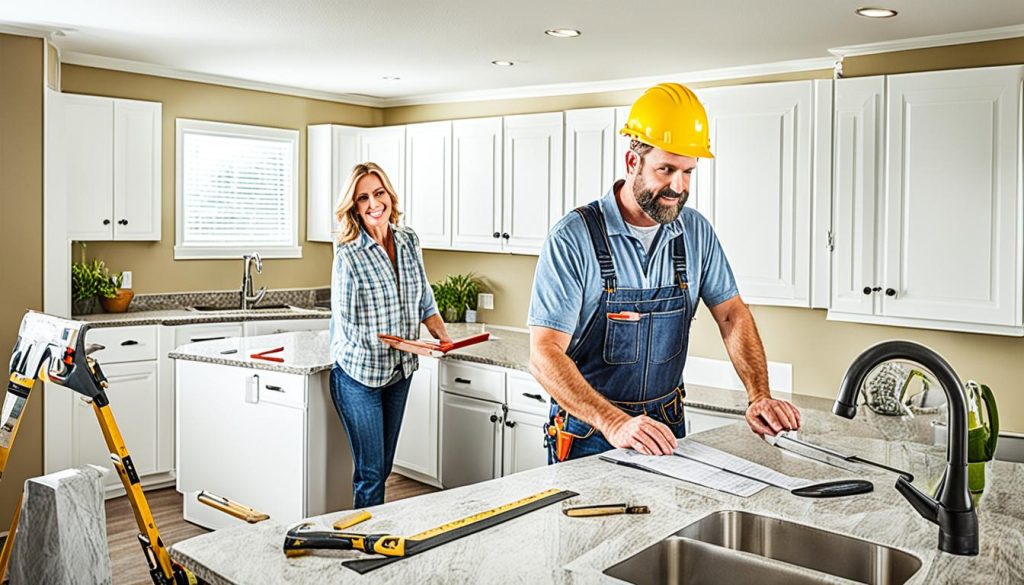Unlocking the value in your home can be a smart financial move, and American Express is here to help. With their home equity loan options, you can access the funds you need to make important repairs, upgrades, or cover other expenses. But before you dive in, it’s essential to understand the differences between their offerings and choose the right one for your needs.
When it comes to home equity financing, American Express has you covered. Their loan products are designed to provide flexibility and convenience, making it easier than ever to tap into the equity you’ve built in your home.
Whether you’re looking for a lump sum of money at a fixed interest rate or a revolving line of credit, American Express offers both options. With their home equity loans, you can secure a lump sum disbursement at a fixed rate, allowing you to budget and plan accordingly. If you prefer more flexibility, a home equity line of credit (HELOC) might be the right choice for you. This option gives you access to funds as you need them during a draw period, with interest only payments due.
By understanding the various features and benefits of American Express home equity loan offerings, you can make informed decisions about your financial future. Keep reading to explore the ins and outs of these financing options and how they can help you achieve your goals.
Key Takeaways:
- American Express offers home equity loans and HELOCs to help you unlock the value in your home.
- Home equity loans provide a lump sum disbursement at a fixed interest rate, while HELOCs offer a revolving line of credit.
- Using home equity for important expenses can provide lower interest rates and potential tax deductions.
- Consider the advantages and drawbacks of using home equity and choose a reputable lender that meets your specific needs.
- American Express home equity loans can help secure your future and improve your financial situation.
What is a Home Equity Loan and How Does it Work?
A home equity loan is a type of second mortgage that allows homeowners to borrow a lump sum of money at a fixed interest rate. Repayments start immediately and cover both interest and principal over a term ranging from five to 30 years. Home equity loans can be used for various expenses, including home-related repairs or upgrades. The loan amount is typically determined by the size of the homeowner’s ownership stake and the loan-to-value ratio.
If you’re a homeowner looking to finance a significant expense, a home equity loan can offer a viable solution. With a fixed interest rate that remains consistent throughout the loan term, you can have peace of mind knowing that your monthly payments will remain steady. This allows for better financial planning and budgeting.
Once approved, you’ll receive a lump sum disbursement of the loan amount. This immediate influx of cash can be used for a variety of purposes, but one common use is financing home-related repairs or upgrades. Whether you’re looking to remodel your kitchen, add a bathroom, or make necessary structural repairs, a home equity loan can provide the necessary funds.
The repayment period for a home equity loan can range from five to 30 years, depending on the terms of the loan agreement. During this time, you’ll make regular monthly payments that cover both the principal amount borrowed and the interest accrued. It’s important to carefully consider the loan term and your budget to ensure you can comfortably afford the payments.
Using a home equity loan for home-related repairs or upgrades offers the benefit of having a fixed interest rate, allowing for predictable payments. Additionally, the lump sum disbursement provides immediate access to funds, enabling you to start your home improvement project without delay. With the repayment period spanning several years, there’s ample time to pay off the loan while enjoying the benefits of your home upgrades.
Next, let’s explore the specifics of a home equity line of credit (HELOC) and how it differs from a home equity loan.
Understanding Home Equity Line of Credit (HELOC)
A home equity line of credit (HELOC) is a popular financing option for homeowners who want to tap into their home equity. It provides a flexible and convenient way to borrow funds as needed for various purposes.
With a HELOC, homeowners are granted a revolving line of credit, which means they can borrow funds up to a certain limit during a specified draw period. This draw period is typically around 10 years, allowing homeowners ample time to access funds for home improvements, debt consolidation, or other expenses.
One of the key advantages of a HELOC is its variable interest rate. While the exact rate may vary, it is often tied to a financial benchmark like the prime rate, which can change over time. This means that the interest rate on a HELOC may go up or down, depending on market conditions. However, some lenders may offer fixed-rate options for added stability and predictability.
After the draw period ends, a repayment period begins. During this phase, which usually lasts 10 to 20 years, borrowers are required to make monthly payments that include both the interest and principal amounts. This repayment structure ensures that the outstanding balance is gradually paid off over time.
Another significant advantage of a HELOC is that the interest paid on the funds may be tax-deductible if they are used for home-related repairs or upgrades. This can provide additional financial benefits for homeowners, potentially reducing their overall tax burden.

In summary, a home equity line of credit (HELOC) offers homeowners a flexible and accessible way to borrow funds based on their home equity. With a variable interest rate, a draw period for borrowing, and a subsequent repayment period, HELOCs provide homeowners with the financial flexibility they need. Additionally, the potential tax-deductible interest makes it even more appealing for those considering home-related expenses.
Benefits of Using Home Equity for Home Improvement
Using home equity for home improvement offers several benefits. Home equity loans and HELOCs often come with lower interest rates compared to credit cards or personal loans. The interest paid on these loans may also be tax-deductible if the funds are used for home-related expenses. Home equity loans generally allow borrowers to access larger sums of money compared to unsecured loan products. Additionally, investing in home improvements can increase the value of the property and potentially provide a return on investment.
When you use home equity for home improvement, you can take advantage of lower interest rates. Unlike credit cards or personal loans that often come with high-interest rates, home equity loans and HELOCs typically offer more favorable terms. This means you can save money by paying less interest over the life of the loan.
Furthermore, the interest paid on home equity loans and HELOCs may be tax-deductible. By using these funds for home-related expenses such as repairs or upgrades, you may be eligible to claim a tax deduction, which can help reduce your overall tax liability.
Another advantage of using home equity for home improvement is that it allows you to access larger sums of money. Compared to unsecured loan products, which are typically limited in terms of borrowing capacity, home equity loans and HELOCs offer the opportunity to borrow a significant amount of money based on the value of your home.
Finally, investing in home improvements can potentially provide a return on investment. By making upgrades or renovations, you can increase the value of your property. This can be beneficial if you plan to sell your home in the future, as it can lead to a higher resale price and a possible return on your initial investment.

In conclusion, using home equity for home improvement offers numerous advantages such as lower interest rates, the potential for tax deductions, access to more significant funds, and the possibility of a return on investment. However, it’s crucial to carefully consider the drawbacks associated with home equity financing as well. By weighing the pros and cons, you can make an informed decision that aligns with your financial goals and needs.
Drawbacks of Using Home Equity for Home Improvement
While using home equity for home improvement can offer many advantages, it’s important to be aware of the potential drawbacks as well. Here are a few factors to consider:
Risk to Your Home
When taking out a home equity loan or HELOC, it’s essential to make your monthly payments on time. Failure to do so can put your home at risk of foreclosure, as these loans are secured by your property. It’s important to carefully assess your finances and ensure you have a reliable plan for repaying the loan to protect your home.
Potentially Borrowing More Than Needed
Home equity financing often allows for larger loan amounts, which can tempt homeowners to borrow more money than they actually need. It’s crucial to carefully evaluate your home improvement project’s requirements and only take out the necessary amount to avoid paying interest on funds that aren’t fully utilized.
Additional Costs
Obtaining a home equity loan involves additional expenses beyond the loan amount itself. These costs may include closing costs, appraisal fees, and other associated charges. It’s important to factor in these additional expenses when assessing the overall cost of the loan and determining its feasibility.
By being aware of these potential drawbacks and mitigating risks, you can make informed decisions about using home equity for your home improvement project.

“It’s crucial to carefully evaluate your home improvement project’s requirements and only take out the necessary amount to avoid paying interest on funds that aren’t fully utilized.”
How to Get a Home Equity Loan for Your Remodel
If you’re planning a home remodel and need financial assistance, there are several options available to you. Home equity financing is a popular choice for homeowners looking to access funds for their renovation project. When obtaining a home equity loan, it’s essential to research and compare different lenders to find the best option that suits your needs. Here are a few types of lenders you can consider:
Banks
Major retail banks, such as Bank of America and Citizens Bank, offer home equity products. These banks often provide competitive interest rates and have established reputations in the industry. They may also have branch locations that offer convenient access to services and expert advice.
Credit Unions
Credit unions, like Alliant Credit Union and PenFed Credit Union, also offer home equity loan options to eligible members. These institutions typically offer personalized service and competitive rates. If you’re a member of a credit union, it’s worth exploring the home equity options they provide.
Mortgage Lenders
There are various mortgage lenders that specialize in home equity financing. These lenders focus on providing home loans and have the knowledge and expertise to guide you through the process. Popular mortgage lenders include Quicken Loans, loanDepot, and Wells Fargo.
Online-Only Lenders
If you prefer a convenient and streamlined online experience, consider online-only lenders such as Discover and Figure. These lenders offer home equity loans entirely online, making it easy to apply, receive funding, and manage your loan from the comfort of your home.
Availability of these lenders may vary depending on your state and other factors. It’s crucial to thoroughly research and compare lenders to find the best option for your remodel. Consider factors such as interest rates, repayment terms, fees, customer reviews, and customer service quality when making your decision.

By choosing the right lender for your home equity loan, you can secure the financing you need to bring your remodel dreams to life. Whether you prefer the familiarity of a bank, the personalized service of a credit union, or the convenience of online lending, there’s a lender out there that’s perfect for you.
Conclusion
American Express home equity loans offer homeowners flexible financing solutions to unlock the value in their homes. Whether you choose a home equity loan or a home equity line of credit (HELOC), these options can provide the funds needed for home improvements, debt consolidation, emergency expenses, and more.
By carefully considering the benefits and drawbacks of using home equity for various purposes, homeowners can make informed decisions that align with their financial goals. It’s crucial to choose a reputable lender, like American Express, that offers competitive rates and favorable terms.
With responsible borrowing and proper planning, American Express home equity loans can help you secure your future and improve your financial situation. Whether you want to renovate your home, consolidate debt, or unlock the value of your property, American Express provides the flexible financing solutions you need.
Unlock the full potential of your home today with an American Express home equity loan and take advantage of the flexible financing options available to you.
FAQ
What is a home equity loan?
What can a home equity loan be used for?
What is a home equity line of credit (HELOC)?
How does a HELOC work?
Can the interest paid on a HELOC be tax-deductible?
What are the benefits of using home equity for home improvement?
What are the drawbacks of using home equity for home improvement?
Are there other lenders besides American Express that offer home equity financing?
Source Links
- https://www.theretirementgroup.com/featured-article/5448090/decoding-the-home-equity-line-of-credit-heloc-weighing-the-pros-and-cons-for-american-express-employees
- https://www.bankrate.com/home-equity/home-equity-for-improvement-renovation/
- https://www.bankrate.com/home-equity/reasons-to-use-home-equity/
